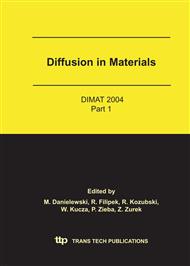p.566
p.572
p.578
p.584
p.593
p.603
p.609
p.621
p.635
Computer Simulation of Phase Decomposition in Magnetic Materials Based on the Phase-Field Method
Abstract:
During the last decade, the phase-field method has emerged across many fields in materials science as a powerful tool to simulate and predict complex microstructure evolutions. Since phase-field methodology has an ability to model complex microstructure changes quantitatively, it will be possible to search for the most desirable microstructure by using this method as a design simulation, i.e. through computer trial-and-error testing. In order to establish this methodology, the flexible quantitative modeling for various types of complex microstructure changes using the phase-field method must first be needed. In this study, as the typical examples for the modeling of the complex microstructure changes using phase-field method, recent simulation results for the diffusion controlled phase transformations and microstructure developments in magnetic materials are demonstrated.
Info:
Periodical:
Pages:
593-602
Citation:
Online since:
April 2005
Authors:
Price:
Сopyright:
© 2005 Trans Tech Publications Ltd. All Rights Reserved
Share:
Citation:


